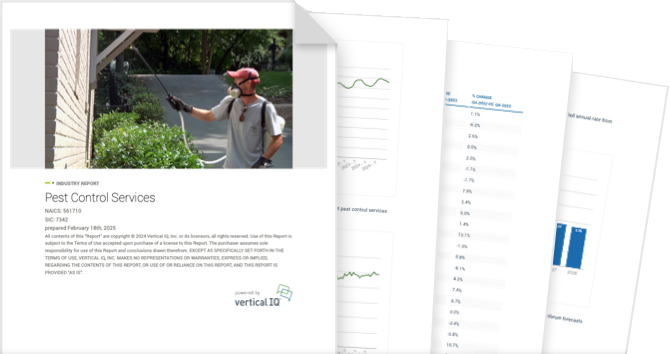Prefabricated Wood Building Manufacturers NAICS 321992

Unlock access to the full platform with more than 900 industry reports and local economic insights.
Get access to this Industry Profile including 18+ chapters and more than 50 pages of industry research.
Industry Summary
The 656 prefabricated wood building manufacturers in the US produce modular homes and commercial building units, log cabins, detached garages, sheds, sauna rooms, gazebos, wooden geodesic domes, and farm buildings such as barns, chicken coops and corn cribs. This industry does not include mobile home manufacturers, although some modular building manufactures also offer mobile homes and park models.
Variable Building Material Prices
Prefabricated wood building manufacturers rely on supplies of lumber, particle board, drywall, electrical wiring, plumbing fixtures, windows and doors, roofing and siding materials, insulation, flooring materials, cabinets, paint, and hardware.
Demand for Affordable Housing
Firms stand to benefit by working with land developers, lenders, and the government in creating affordable housing projects.
Recent Developments
Nov 10, 2025 - Lumber Prices Ease
- Seasonally softer lumber prices may ease margin pressures for prefabricated wood building manufacturers. Lumber prices lingered near seven week lows in early November after a sharp selloff prompted primarily by weaker construction activity and high inventories, according to Trading Economics. On November 7, lumber futures were about $530 per thousand board feet, down from a mid-October high point of more than $610. Lumber dealer and distributor stocks remain elevated as a rebound of the summer homebuilding season fizzled amid high interest rates and home prices.
- North American multifamily construction spending in 2026 is expected to decline 2% after dropping a projected 9% in 2025, according to FMI’s fourth-quarter 2025 North American Engineering and Construction Outlook. Many multifamily markets have seen higher vacancy rates and weaker rent growth in recent years after an influx of new supply created a glut. However, more recently, absorption has outpaced new supply and rent growth and vacancies are showing signs of improvement. One bright spot is modular multifamily housing projects, which is forecast to rise 5% per year through 2029. The overall multifamily market is expected to see construction spending increase by 5% in 2027, 8% in 2028, and 9% in 2029.
- Sales of existing US homes increased by 1.5% in September from August and were up 4.1% year-over-year, according to the National Association of Realtors (NAR). NAR chief economist Lawrence Yun said, "As anticipated, falling mortgage rates are lifting home sales. Improving housing affordability is also contributing to the increase in sales. Inventory is matching a five-year high, though it remains below pre-COVID levels. Many homeowners are financially comfortable, resulting in very few distressed properties and forced sales. Home prices continue to rise in most parts of the country, further contributing to overall household wealth." Existing home sales help drive demand for prefabricated buildings, including sheds and auxiliary dwelling units (ADUs).
- In 2024, the total market share for new modular housing and panelized single-family homes was 3% of all new single-family homes, unchanged from 2023, according to recent National Association of Home Builders (NAHB) analysis of Census Bureau data. Modular housing and panelized single-family home market share have been declining over time. In 1998, single-family modular homes held a 4% market share, and panelized homes had a 3% share. Despite the weak market share in recent years, there is the potential for more modular and panelized single-family housing demand amid the lack of productivity in the residential construction sector. In 2024, about 3% of multifamily buildings were constructed with modular and panelized methods, down significantly from 7% in 2023.
Industry Revenue
Prefabricated Wood Building Manufacturers

Industry Structure
Industry size & Structure
A typical prefabricated wood building manufacturing firm operates out of a single location, employs about 36 workers, and generates about $12 million annually.
- The prefabricated wood building manufacturing industry consists of about 656 companies which employ about 23,600 workers and generate about $7.9 billion annually.
- Just 50 firms have 100 or more workers.
- The industry is somewhat concentrated: the 20 largest firms represent just 3% of the total number of firms but they control 57% of industry revenue.
- Large companies include Skyline Champion (modular homes), Southland Log Homes, Backyard Products (sheds, gazebos), Country Carpenters (barns and sheds), and JDM Structures (barns and sheds).
Industry Forecast
Industry Forecast
Prefabricated Wood Building Manufacturers Industry Growth

Vertical IQ Industry Report
For anyone actively digging deeper into a specific industry.
50+ pages of timely industry insights
18+ chapters
PDF delivered to your inbox
